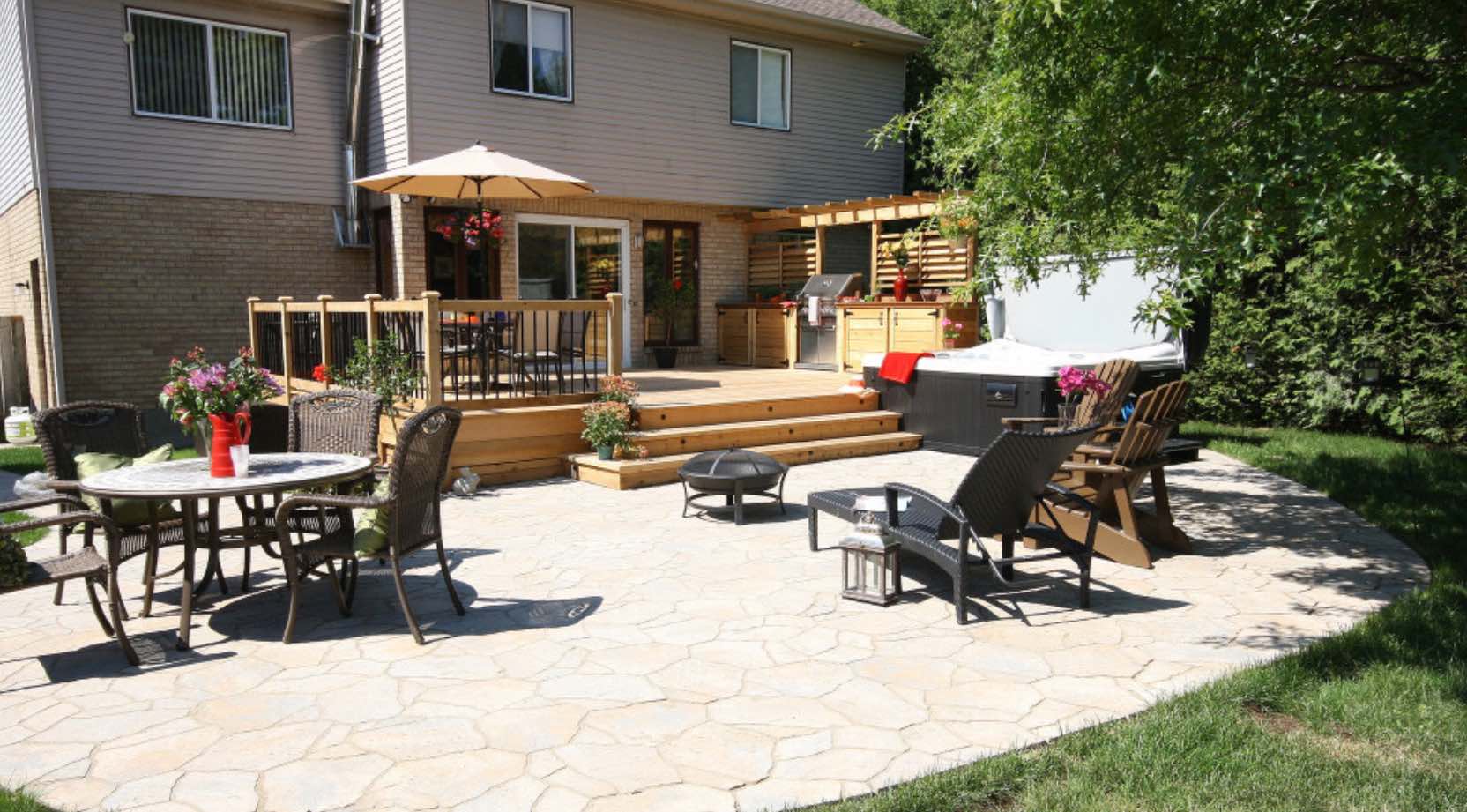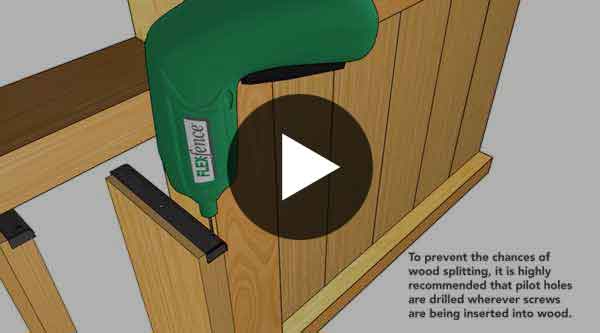Patio Louver
When it turns cold, place a hot tub or a firepit behind a patio privacy fence, and you create a home base for everything from unforgettable holiday celebrations to a Hallowe’en party that’s destined to be the talk of the neighbourhood.
Patio Privacy Fencing: The Key to Creating a Serene Outdoor Sanctuary

And while great at shutting the world out – especially for homes built close together – a patio privacy fence also allows for pinpoint adjustments to your personal microclimate. Close the louvers, and the sun no longer bakes everything below or causes laptop glare that threatens to send you back into the living room to work. Open them, and you get the best of both worlds: a bit of breeze and the last rays of daylight before the sunset swallows them all up.
Deciding on the Dimensions for Your Patio Privacy Fence
The number of sections and dimensions of your privacy fencing will depend on what sort of outdoor area or experience you’re trying to create.
Our FLEXfence Louver System hardware is available in 4-foot standard kits or custom lengths to a maximum of 8 feet and can be easily cut and sized to meet your needs. Each kit includes an operating bar that allows you to adjust your patio louvers, all fastening hardware, rails and brackets, plus easy-to-follow assembly instructions.
To get an idea of the sort of structures you can build, check out the showcase of designs rigged up by our customers or download DIY plans for all sorts of louvered patio fences.
Choosing the Materials for Your Patio Privacy Fence
Both Cedar and Redwood are great candidates, as they’re naturally rot- and insect-resistant and tend not to warp.
If using pressure-treated lumber ensure the wood is completely dried, or it could warp. It can take anywhere from a few weeks to several months for the wood to dry and stabilize.
In the end, since the appearance of your patio privacy fence is a personal choice, it might be best to get a sample of Cedar and Redwood boards from your local lumber centre and see what looks best in your home environment. Lumber sales associates can also advise you on the best sealing, staining and painting products.
No matter which sealant, stain or paint you choose, most brands recommend you re-apply products every two to three years for maximum effectiveness. To extend the lifespan of your wood, you’ll also want to clean off any bird droppings, dirt, mould or mildew.
A Note About Colour
Deciding Between DIY or a Contractor-Installed Patio Fence
If you’re confident about your construction skills, you can use our FLEXfence Louver System hardware kits to create a patio privacy fence that’s customized for your home. You’ll find helpful video tutorials and downloadable plans for both a fully-louvered fence plus two types of board fences that feature a louver wall on top in the DIY section of our site.
If you’d rather leave the design and construction to a professional, you can direct your architect and contractor to the Dimension Guide and Calculator tools on our website, so they can better design and estimate the materials you’ll need and price out your work accordingly. They can also view our FLEXfence line of recommended accessories for post brackets and braces.
Where to Buy
Ready to buy your FLEXfence Louver System hardware kits and build your new patio privacy fence? You’ll find a selection of retailers and regional outlets that stock our FLEXfence Louver System hardware kits in Canada (by province) and the USA (by state) on our Where to Buy page, but you can also view a list of nearby suppliers by simply entering your city and country in our location tool.
Not Sure You Can Pull Off a Patio Privacy Fence?
And remember, if you’re uncomfortable installing a patio privacy fence on your own, you can always hire an experienced contractor to build it for you utilizing our FLEXfence Louver System.
FAQs About Patio Privacy Fences
When constructing my patio fence or louvered privacy wall, what is the recommended max span for the slats?
We recommend shorter spans to help prevent sagging. Spans greater than 4′ are NOT recommended. The wood species also affects the wood span. Pressure-treated (PT) lumber has a tendency to warp and/or twist when wet, whereas Cedar and Redwood are more stable. PT spans greater than 4′ are NOT recommended.
How do I put together several 4' kits of FLEXfence so it looks like a continuous run on my patio privacy fence?
When butting pieces together, cut the adjoining ends to create a 4″ space between center holes.
What if I need horizontal spans longer than 4' or 5' to fence in a large patio?
What is the max vertical span for the slats?
We recommend 6′ as the maximum span for vertical slats.
When mounting FLEXfence onto a post, does it matter whether we use 4" or 6" fence posts?
Can I paint various parts of the FLEXfence Louver System?
YES! But you’ll need to use plastic-compatible paint.
Has the FLEXfence Louver System been performance tested?
YES! FLEXfence has been independently tested for quality control. We post product test results for snow loads and wind on our website, and if you scroll down to just below these results, you’ll find information about our manufacturer’s warranty as well.
We select only the highest-grade materials and adhere to manufacturing best practices to ensure our FLEXfence Louver System hardware kits are strong and durable.

